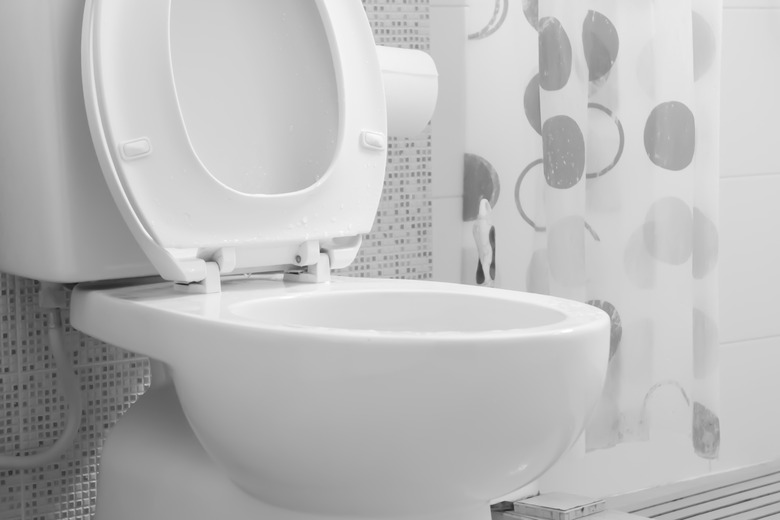Purpose Of Open Front Toilet Seats
Whether you tackle public toilet seats with wipes and paper covers, use the old squat-and-balance technique or bravely make full contact, you'd probably rather be at home when the urge strikes. Besides the "ew" factor, public toilets have an open-front toilet seat design that just doesn't feel the same. If it's not comfortable, why are virtually all public toilets designed this way? Learning the purpose of open-front toilet seats will — if nothing else — give you something to ponder the next time you enter a stall.
Open-Front Toilet Seat Law
Open-Front Toilet Seat Law
The reason open-front toilet seats are seen in all public bathrooms is simple: They're required by law. The International Association of Plumbing and Mechanical Officials (IAPMO) publishes the Uniform Plumbing Code which, as of 2018, necessitated the use of open-front toilet seats in section 411.3. Public toilets can also comply with code 411.3 if they feature an automatic plastic seat cover on a continuous toilet seat design.
Because a plastic seat cover is an acceptable alternative, this code implies that hygiene is the reason why open-front toilets are required. But does that small section of toilet seat really harbor many germs?
Although you might be fortunate enough to rarely drip urine onto your toilet seat at home, it does happen — especially when kids use the toilet, men don't lift the seat or "squatters" try to avoid contact with the seat. Add a heavy period into the mix and admit it, you've wiped the front of the toilet seat clean throughout your lifetime.
Thus, the main purpose of those open-front toilet seats is to catch the dribbles and splashes without causing the next person to sit in it. But as unpleasant as it is to imagine your thighs soaking up someone else's urine, the actual appendages meant to be protected by open-front toilet seats might surprise you.
Remains Hygienic Where It Counts
Remains Hygienic Where It Counts
Hands were actually the target of Uniform Plumbing Code 411.3 — women's hands, to be precise, according to IAPMO's senior director of code development Lynne Simnick as reported by Slate. The open-front seat design ensures that women can reach down to clean their genitals without scraping their hand on the part of the toilet seat where all those bodily fluids like to hang out. (The alternative method of standing to wipe unfortunately adds more drips to the mix.)
Even though you wash your hands after you wipe, you still have to touch your clothes, purse and stall door to get to the sink, so the extra hand hygiene is certainly appreciated. But what's worse is imagining the toilet paper in your hand grazing the toilet seat before it lands on your nether regions. Gross! The extra inch or so of space afforded by an open-front design gives you enough room to maneuver carefully.
Open-Front Benefits for Men
Open-Front Benefits for Men
An open-front seat design offers an advantage for men too. You don't have to worry quite so much about the previous visitors' toilet manners or aim when there's a convenient trough to catch the drips and avoid backsplash. And should your genitalia ever graze your home toilet seat, you'll be relieved to know that such mishaps are less likely to happen while seated on a public toilet. Even though sources like Winchester Hospital denounce the possibility of contracting an STD from a toilet seat, hygiene is hygiene!
